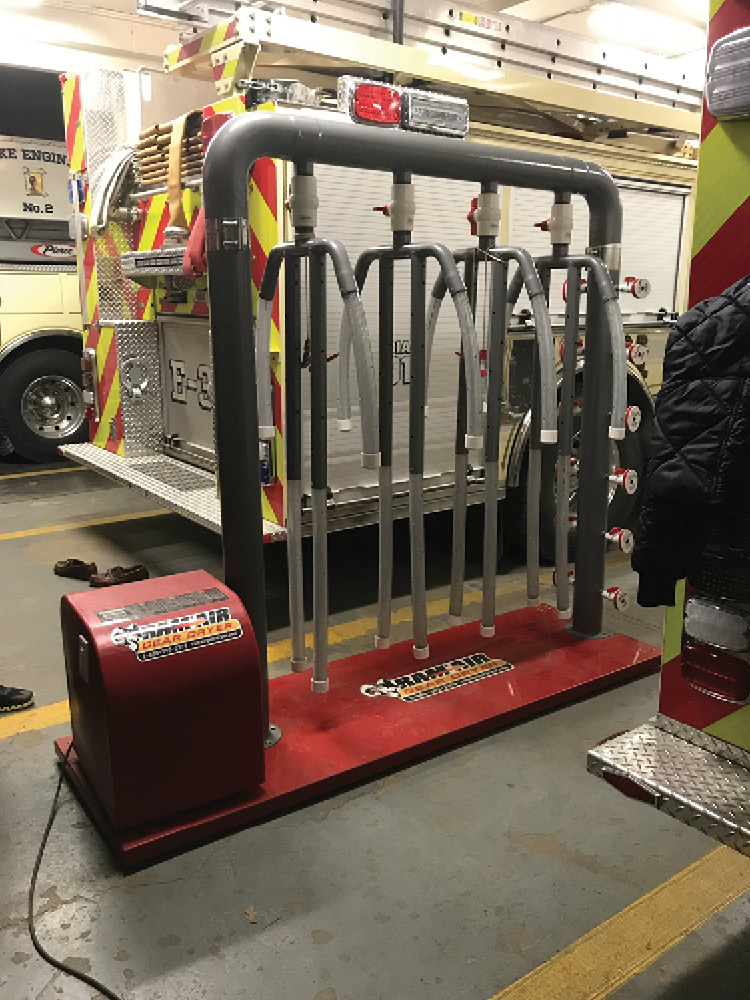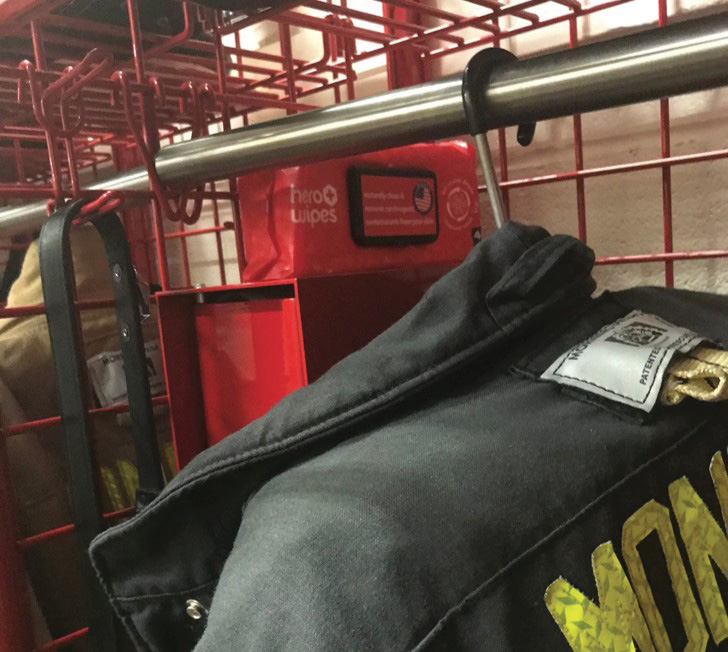
Our personal protective equipment (PPE) is the most used firefighting/ rescue equipment we have; we don it for every alarm and drill (or, at least, we should) we attend. However, PPE is also one of our most unknown pieces of equipment. Conduct a survey of members of your department and ask them about the year, make, and model of the apparatus pump; tank sizes, ladders; and lights. Next, ask them about the age of, the materials that make up the three layers of, and the National Fire Protection Association (NFPA) standard pertaining to their PPE. Then compare their answers. You may have many more firefighters able to correctly answer questions about their apparatus than about their gear. This is very concerning.
RELATED
Specifying PPE: The Technical Aspects
Firefighter Cancer Prevention: Using the Tools Provided to Us
How Clean Is Clean? A Fire Service Transformation for Addressing PPE Contamination Control
Consider this scenario: You are doing an interior search or operating the line. Does it really matter if the engine outside is a brand new $700,000 custom engine with every bell, whistle, and light known to man or a 25-year-old commercial cab with some rust, dents, and scratches that has passed its pump test when in an emergency? Either way, water will flow through the line, but will your PPE hold up long enough to protect you? Should your PPE be “salty” for days or weeks after doing a good job? What about the contaminants that are left behind on the PPE? What about cancer? Are there cancer-causing substances (carcinogens) on the PPE after a good run? The answer is yes. We must become more knowledgeable about our PPE. This doesn’t mean we must know each little tab, rule, regulation, and test, but we must know from what it can and, more importantly, cannot protect us.
Several articles, such as “Specifying PPE: The Technical Aspects” and “Specifying PPE from A-Z” (March 2009) have appeared on fireengineering.com that discuss some of the key tests and requirements to assist in understanding the properties of PPE. With the knowledge of the PPE system, these articles describe a systematic approach on how to work through the process of specifying and purchasing PPE for your department. They also give you the background on from what your PPE can protect you, how it is constructed, tests that allow for comparison, and a smart process to allow you to purchase what you need. Take some time and read them to help improve your knowledge of PPE.
One of the largest “new” discussion topics in the fire service is the “C” word—cancer! Many studies, reports, and research have been and continue to be conducted on cancer in the fire service, including where we are most exposed and how we can reduce our risks. Although it is impossible to eliminate all the risks, if you can reduce some, you can make a world of difference to your members, your family, and your department.
Types of Cleaning
We are required by NFPA 1971, Standard on Protective Ensembles for Structural Fire Fighting and Proximity Fire Fighting, to clean and inspect our PPE at least once per year. If you are a member of a department that responds to more than one fire a year and you are, typically, in the mix during the firefight, you and your PPE may have been exposed to such toxic materials as benzene, formaldehyde, vinyl chloride, arsenic, and benzopyrene, to name a few. These materials can cause cancers such as kidney, liver, prostate, non-Hodgkin’s lymphoma, bladder, lung, leukemia, and much more. So, why clean your PPE? Reread the previous sentence. Cancer can steal your health; your time; your finances; your family; and, most importantly, your life.
Now that you know what you can get, how do you protect yourself, your family, and your friends? First, don’t bring your PPE home to clean! You would never bring home a level “A” hazmat suit to put into a washer with your son’s clothing, so treat your PPE the same way. Each department needs a plan to conduct a few types of cleaning, which follow.
Gross cleaning. This cleaning is completed at the fire scene prior to returning (the preferred time) or once you return to your station. Do a quick rinse with a hose; a brush; and, if available, soap to remove contaminants (as much as 50 to 75 percent, according to some reports) such as dust, debris, and soot that contaminate gear. It may not get your gear 100 percent clean, but it is a start.
Advanced cleaning. This is the normal cleaning done throughout the year when your PPE is “dirty.” Although it may or may not take place directly after an alarm, conduct it soon after the PPE has been soiled including after working fires, motor vehicle accidents, or other alarms. This cleaning should start with the gross cleaning at the scene or back at the station and be done with a proper washing machine with the approved cleaning agents recommended by your PPE manufacturer (photos 1, 2).

(1) A 30-pound commercial washer can clean two sets of personal protective equipment (PPE). (Photos by author.)

(2) A PPE drying system.
There are two types of methods to this cleaning: in-house and service provider (ship out). Both have their pros and cons. In-house cleaning offers the fastest turnaround. In most cases, you can wash and dry your gear in just a few hours. This works well in volunteer stations where there is no set duty time and in departments where members do not have spare PPE. The con is that you own the cleaning and inspection and have a costly startup for the washing and drying system. In addition, there is no third party to make sure you complete the cleaning correctly. Service provider cleaning takes very little work (bag and send), the cleaning and repairing are done simultaneously (in many cases), and there is no up-front cost to obtain the equipment. The con is that, unless there is spare PPE, you cannot respond to any alarms.
Specialized cleaning. This cleaning is important not just for cleaning but for inspection as well. It is the level of cleaning required for any unusual contamination, any time you feel that your methods might not fully clean the PPE, or if there is a chance of damage. Most PPE manufacturers offer some level of training or certification to properly inspect and clean your PPE. This includes checking for damage, wear, and proper cleaning. Any time there’s a question, send it back to the manufacturer.
Emergency cleaning. This cleaning does not fall under NFPA guidelines, but it can be thought of when the PPE needs to be “red bagged” at the alarm. This would typically be for heavy contamination of PPE from blood or other body fluids or after responding to a fire at a garbage facility, where you must clean the PPE directly once the alarm is completed so it can be ready to use again at a moment’s notice.
Many feel the best overall method is a combination of both cleaning methods. Have the washer in-house for your routine cleaning with the proper training on how to inspect your PPE once a year, as needed. When repairs are needed or proper cleaning methods are questioned, it is required that you have a method to send out the PPE for specialized cleaning and inspection.
Cleaning Methods
Following are some simple methods to keep you a little safer from contamination.
Clean your hood! Some departments have a “hood cleaning day” or a pail of clean hoods for members to use while the dirty hoods are cleaned.
Wash your hands, face, and neck after the fire. Soap, water, and cleaning wipes have been shown to remove 50 percent or more of the contaminants from your skin. The skin on your face and neck are full of blood vessels and absorb toxins readily. With a simple wash and wipe, you reduce your chance of illness (photo 3).

(3) Specialized cleaning wipes made available in this PPE storage rack.
Do not store dirty PPE in your vehicle. Air out and off gas your PPE after a fire because many of its contaminants are volatile. If left in an enclosed area, your gear will hold these contaminants by the time you retrieve your gear for its next use. (Consider how the truck room smells after a fire.)
Take a shower, change, and clean your clothing. This can be difficult in a volunteer department, where there are typically no shower areas and sets of clean clothing to change into. So, these departments must consider having showers installed. At a minimum, return home, shower, and wash your clothing individually right away. When you arrive home, do not come in contact with your family (who may want a hug or a kiss) until you are clean.
Firefighting is a balance between risk and reward. However, one risk that we can all reduce is the risk of illness and, possibly, cancer by properly cleaning, maintaining, and storing our PPE. The days of pride in having the most heavily damaged, soiled, and odorous PPE are a thing of the past. Extend your career, your health, and time with your department and your family by taking better care of your PPE.
TIM PILLSWORTH is a 33-year fire service veteran and a member of the Washingtonville (NY) Fire District. He began his fire service career in Castleton, New York, and is also a past chief of the Winona Lake Engine Company in Newburgh, New York. Pillsworth has authored/coauthored articles on engine company operations, nozzle flow, personal protective equipment, and volunteerism for Fire Engineering as well as written the PPE chapter of Fire Engineering’s Handbook for Firefighter I and II. Pillsworth is also a project engineer for the U.S. Army Corps of Engineers in West Point, New York.

